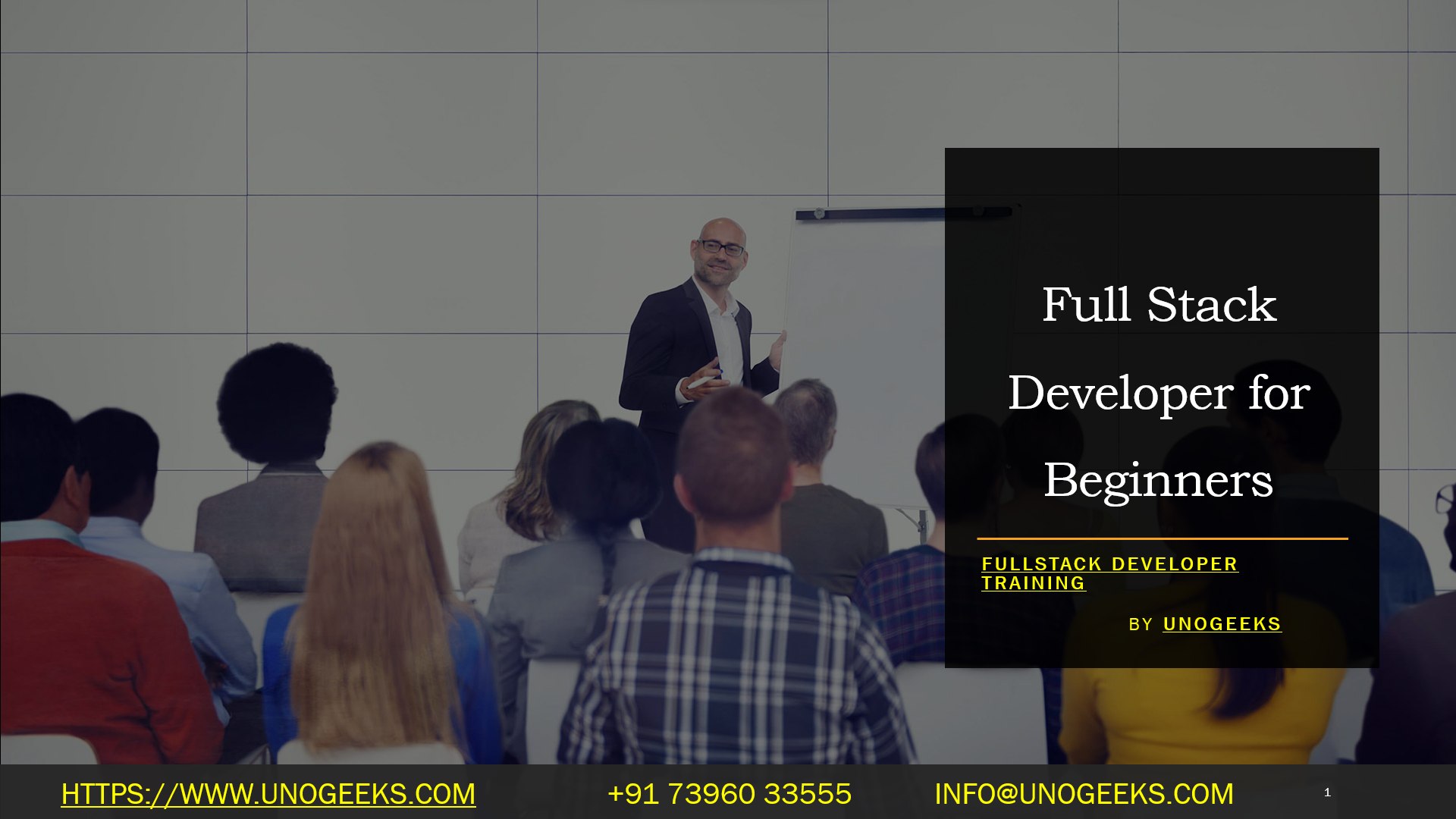Full Stack Developer for Beginners
Full Stack Developer for Beginners
Becoming a Full Stack Developer as a beginner is an exciting journey, but it requires dedication and a structured approach to learning. Here’s a step-by-step guide for beginners to start their path toward becoming a Full Stack Developer:
1. Learn the Basics of Programming:
- Start with a beginner-friendly programming language like Python or JavaScript. Learn the fundamentals of variables, data types, loops, and conditional statements.
2. HTML, CSS, and JavaScript:
- HTML is the markup language for web content, CSS is for styling, and JavaScript is for interactivity. Master these foundational technologies for front-end development.
3. Front-End Development:
- Dive deeper into front-end development by learning about the Document Object Model (DOM), handling events, and working with libraries and frameworks like React, Angular, or Vue.js.
4. Version Control:
- Learn Git and use platforms like GitHub or GitLab to manage your code and collaborate with others.
5. Responsive Design:
- Understand responsive web design principles to create websites that adapt to various screen sizes and devices.
6. Back-End Development:
- Choose a back-end programming language such as Node.js, Python (with Django or Flask), Ruby (with Ruby on Rails), or PHP (with Laravel).
- Study server-side concepts, routing, databases, and RESTful API development.
7. Databases:
- Learn about databases, both relational (e.g., MySQL, PostgreSQL) and NoSQL (e.g., MongoDB). Understand how to create, query, and manage data.
8. Server Deployment:
- Explore server deployment and hosting options. Practice deploying web applications to platforms like Heroku, AWS, or Azure.
9. Authentication and Security:
- Study authentication mechanisms, encryption, and security best practices to protect your web applications from common vulnerabilities.
10. APIs and Web Services:
- Understand how to create and consume APIs. Practice integrating third-party APIs into your projects.
11. State Management:
- Learn state management libraries or patterns like Redux (for React) or Vuex (for Vue.js) to manage complex application states.
12. DevOps and CI/CD (Optional):
- If you’re interested in automation and deployment, explore Continuous Integration (CI) and Continuous Deployment (CD) concepts and tools.
13. Build Projects:
- Apply your knowledge by building small projects and gradually increasing their complexity. Start with simple to-do lists or personal blogs and move on to more advanced applications.
Full Stack Developer Training Demo Day 1 Video:
Conclusion:
Unogeeks is the No.1 IT Training Institute for Full Stack Developer Training. Anyone Disagree? Please drop in a comment
You can check out our other latest blogs on Full Stack Developer Training here – Full Stack Developer Blogs
Please check out our Best In Class Full Stack Developer Training Details here – Full Stack Developer Training

———————————-
For Training inquiries:
Call/Whatsapp: +91 73960 33555
Mail us at: info@unogeeks.com
Our Website ➜ https://unogeeks.com
Follow us:
Instagram: https://www.instagram.com/unogeeks
Facebook:https://www.facebook.com/UnogeeksSoftwareTrainingInstitute
Twitter: https://twitter.com/unogeeks
